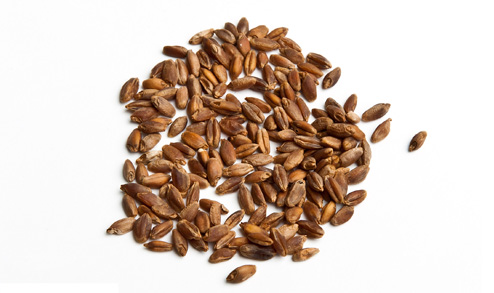Collections of archaeology of Gran Canaria

< Anterior :: Siguiente >>
Inventory: 375
3Object: 318 bare wheat seeds (Triticum aestivum/durum) dried Generi
c classification: Archaeobotanical remains
Matter: Vegetal
Thero cultural: End period of The Prehistory of Gran CanariaD
atation: 1470-1660 cal. d.C.; 1440-1540 cal. D.c.
Description: This set of wheat seeds was originally composed of 345 grains, of which 27 were intended for Carbon 14 dating and DNA analysis (H. R. Oliveira et al., 2012). Among the data provided by the molecular study, two issues are worth highlighting. On the one hand, the genetic diversity documented in the wheat sample, which could point to the storage, in the same space, of grains from different areas of cultivation. On the other, the coexistence of two species: Triticum durum and Triticum aestivum. It is the first time that the latter has been identified on the island of Gran Canaria, since the morphological studies carried out to date had only allowed to record the presence of durum wheat from a few remains of rachi segments. Consider
ing the datings obtained for the seeds, the finding of the coexistence of these two wheat species leads the authors of the analysis to raise well that T. aestivum was introduced by European populations and assimilated without distinction by Aboriginal people, or that T. aestivum was already exploited in pre-Hispanic times.
Use/function: Wheat and barley constituted the two cereals grown by the Aboriginal population of Gran Canaria. The study of carpological remains from various domestic enclaves of the island shows a lower numerical presence of wheat versus barley, a relationship in which factors such as ecological differences between the two plants, technical, taphonic or social issues may be intervening.
Cereal crops were stored in collective barns and silos open inside the dwellings. The various paleodieta and paleonutrition studies developed in Aboriginal bones and teeth suggest that it was agricultural products that formed the basis of the feeding of this population.
Origin: Cueva del Barranco de Guayadeque, T.M. Agaimes-Ingenio,
Gran CanariaDate: Pre-1938
-ERR:REF-NOT-FOUND-go back to the gallery

